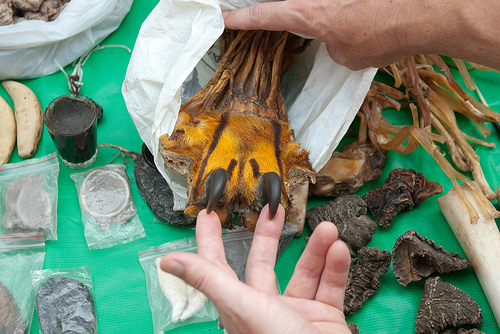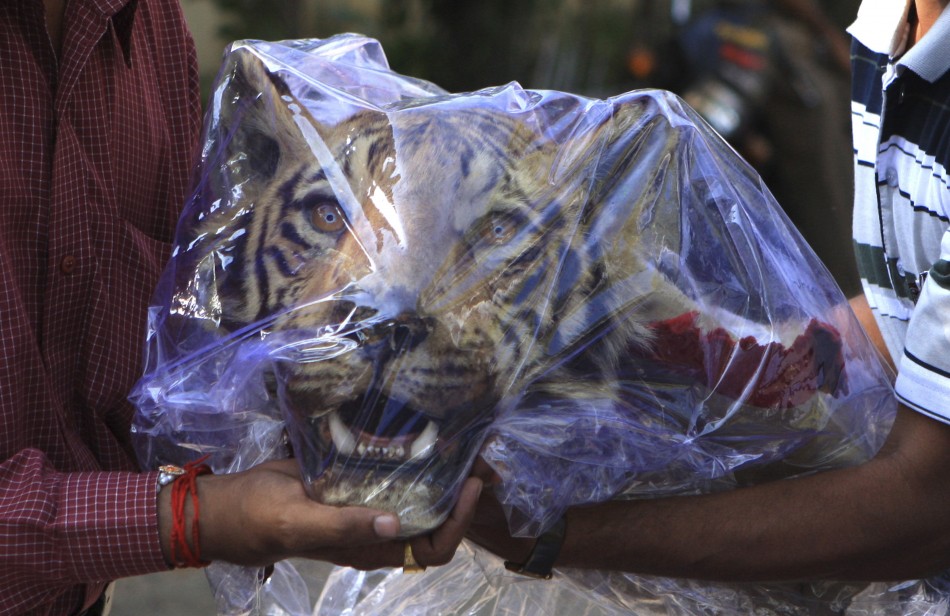There was a time in India when Emperors surrounded by their noblemen would mount the back of an elephant and venture into the jungles to kill a beast. The time of these erstwhile trigger friendly maharajas may well have gone, but the hunt for animals is still on and has taken an uglier shape than ever. It is not royalties anymore but commoners who kill for profit. Wildlife crime is today is a profitable business and the biggest threat to animals and the survival of the planet itself.
If hunting as a sport was always condemned its modern avatar is even deadlier. Modern day hunters are not killing animals to defend themselves or for recreational purposes but to slaughter them into parts and earn millions from each piece. Unfortunately, the thought that the value of the animal as a whole is much more than all the wealth they can gather selling those body parts, is conspicuously missing.
In 2012 the world saw an unprecedented spike in illegal wildlife trade, threatening to overturn decades of conservation gains. Elephants, tigers, rhinos, pangolins, cheetahs, leopards, parakeets, snakes, even the humble hare found its way into the dingy lanes of the wildlife market where their dead bodies and body parts were sold for millions.
Blood Money
Illegal wildlife trade is a multimillion dollar criminal business today analogous to trade in drugs and arms and that says much of the league it is placed in. From mega species like the tigers to small ones like the turtles, no one animal has been spared from the bloody fangs of the poachers.
Although because of the hush hushed manner in which this deals are made, no one is certain as to the exact price each animal product is sold for, there are enough hints to show that it is a gold mine.
Tusk weighing approximately 3 kgs. are sold in the illegal markets for 4000 pounds or 6000 dollars. That is roughly the average monthly salary of an Indian.
A rhino horn today is worth around $65,000 a kilogram
Tiger bones, eyes, teeth, head even whiskers are sold to be used as delicacies, trophies or as medicines. Bones can cost between $140-$370 per kilogram or more.

A kilogram of pangolin scales that earned only 80 yuan (US$10) in the early 1990s would now yield 1,200 yuan ($175) on the black market..
And this is just the tip of the iceberg. Worldwide hundreds of infants stolen, mothers killed, fathers butchered to feed the growing industry of this market.
Epic Loss
In the last decade rhino poaching in South Africa increased 3000 percent! In India too 39 rhinos lost their lives in 2012 and already 13 were killed by poachers this year.
Conservationists have been burning their night oils to save the last remaining 32,00 tigers but between 2000 and 2012 1411 tigers were approximately poached and cut into pieces to be sold in the animal markets.
Ivory estimated to weigh more than 23 metric tons—a figure that represents 2,500 elephants—was seized in the 13 largest seizures of illegal ivory in 2011. Considering it is never one elephant that is killed when poachers attack them for the tusks, the number of jumbos lost can be significantly much larger than estimated from the official figures.
Some investigative journalists have also reported how poachers now just don’t cut the tusk but gouch the root out to not even leave a trace of the tusk behind.
Sharks, that are rarely the concern of the common public, no thanks to their image portrayed in popular media, are shockingly having the hardest time among all marine animals. A recent report says that almost 100 million sharks die every year as their fins are turned into soups.

All sights on CITES
The 178-nation Convention on International Trade in Endangered Species, or CITES, is currently going on in Bangkok, Thailand to gauge the extent to which wildlife crime has spread into the arteries and veins of our natural world.
Around 70 proposals are on the table, most of which will decide whether member nations increase or lower the level of protection on various species. These include polar bears, rays and sharks that are heavily fished for shark fin soup.
Asian elephants, tigers, Indian rhinos, turtles and other marine species and their fate in the hands of traders will also be discussed in the fortnight long meet.
Prior to the establishment of CITES in 1973, there was no international regulation of the cross-border trade in wildlife. Most of the agreements regulating the 35,000 animals under CITES’ purview aim not to outlaw trade, but to ensure it remains sustainable.
Now 175 nations have signed the CITES treaty. India joined CITES in 1976.
Many experts feel that the convention has hardly been able to tackle the growing wildlife crime which is now operated by international gangs equipped with highly modern technology arms and ammunitions. CITES banned all international ivory trade in 1989. But the ban never addressed domestic markets like the one in Thailand, where it remains legal as long as only ivory from domesticated elephants is bought and sold.
But the biennial meeting is a good platform to globally raise voices against the species that are tragically losing the battle of survival. It is also a place to learn new ideas of conservation with numerous researchers, conservationists, field experts converging together.
We can only hope that strategies on paper, see the light of the day and practical solutions help all species big and small to thrive and not be robbed of their just place on the planet.
More Related Stories,
Poachers Cut Rhino’s Horn in Assam
Spies in the Sky Saving Wildlife
Most People Think Camera Traps can put a Stop to Poaching
Image via CC/Flickr by Dan Benett, image2, Dallas Krentzel







Does this help? Signing petition pleading with government. Begging people not to do this, rich people think they are untouchable. We need to show them that they are not, animal crimes punishment need to be harsher but not to the poachers but to the rich people. Make them scared, if there’s no money then the poachers have nothing to sell
You are absolutely right. If there are no buyers, there will be no sellers. In a case like this, it is not the masses that have to change their view really, but those select few who are actually purchasing such items for any amount of money.